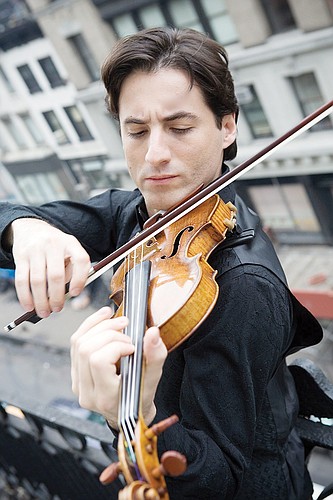- April 25, 2024
-
-
Loading

Loading

This past weekend, the Sarasota Orchestra’s parade of guest conductors continued with Daniel Hege, current music director of the Wichita Symphony and former music director of the now-defunct Syracuse Symphony Orchestra.
Hege is an extremely competent conductor, and what he lacks in energy and zeal is certainly made up by stick technique and clarity. He could step on the podium of almost any major orchestra, without a rehearsal, and come away with a proficient performance. But, for these ears, energy is the key when musicians take that step beyond proficiency, and, for the most part, Hege didn’t have it.
His program, like his podium work, was exemplary. Starting with Haydn, he led the Sarasota Orchestra through a textbook reading that was stylish, clear and witty. The only mistake he made was in removing the composer’s mischievousness at the end and inserting his own humor.
In his Symphony No. 90, as in much of his music, Haydn shows an elfin waggishness. In this case, he gives us two false endings. The conductor, who leads the audience as much as he does the orchestra, can conduct those finales so the audience knows there’s more to come. Hege chose to give the first ending a wild swoop of his baton, leading the listeners to think it was the end, so, of course, they applauded. Then, as if he’d never seen the piece before, he looked at the score and “remembered” it was a false ending. So, he lifted his baton and went to the next ending.
At this point, he actually left the podium as the audience clapped, stopped mid-stride, looked at the concertmaster’s music, put his hand to his head as if to say, “Whoops. I forgot. There’s more,” ascended the podium and proceeded to conduct the real finale. Then, he turned to us and beckoned us to applaud. It was condescending to all. Haydn did it better.
Soloist Philippe Quint joined Hege for a glistening performance of the Barber Violin Concerto, one of the most romantic and beautiful works in the repertoire. Quint, who has one of the most stunning sounds I’ve heard, has a small dynamic range and, when the orchestra reaches a forte, tends to disappear into the orchestral sound, a fault of both the soloist and the conductor, who is responsible for balance. As shimmering as Quint’s sound is, he has some odd physical mannerisms, when not playing, that distract from the performance and make him seem almost embarrassed to be before an audience unless he’s making music. Still, nothing could take away from the lush, gorgeousness of Barber’s fiddle concerto, a work that overflows with the melodies that made the composer’s songs a staple in the vocal literature.
Before the second half of the concert began, Hege chose to speak to the audience to explain the process that went behind the making of this seemingly eclectic program. More of a lecture than an insight, his explanation failed to mention the balletic connection between the two pieces to come: Debussy’s “Prelude to the Afternoon of a Faun” (choreographed most notably by Nijinsky and, then, Robbins) and the 1945 revision of “The Firebird Suite,” by Stravinsky, (originally with choreography by Fokine and, later, Balanchine).
These are two of the most sensuous pieces of music written in the 20th century, the Debussy achingly like an aural painting by Monet, and the Stravinsky moving into the Matisse era. Hege gave them each note-perfect performances, but they lacked the intensity and tension so necessary in this (and all) music.
Soloists from within the orchestra gave the works the inspiration needed. The first chair winds — flute, oboe, clarinet, bassoon and horn — were nothing short of spectacular. They brought the passion and zest that was, for the most part, lacking on the podium.